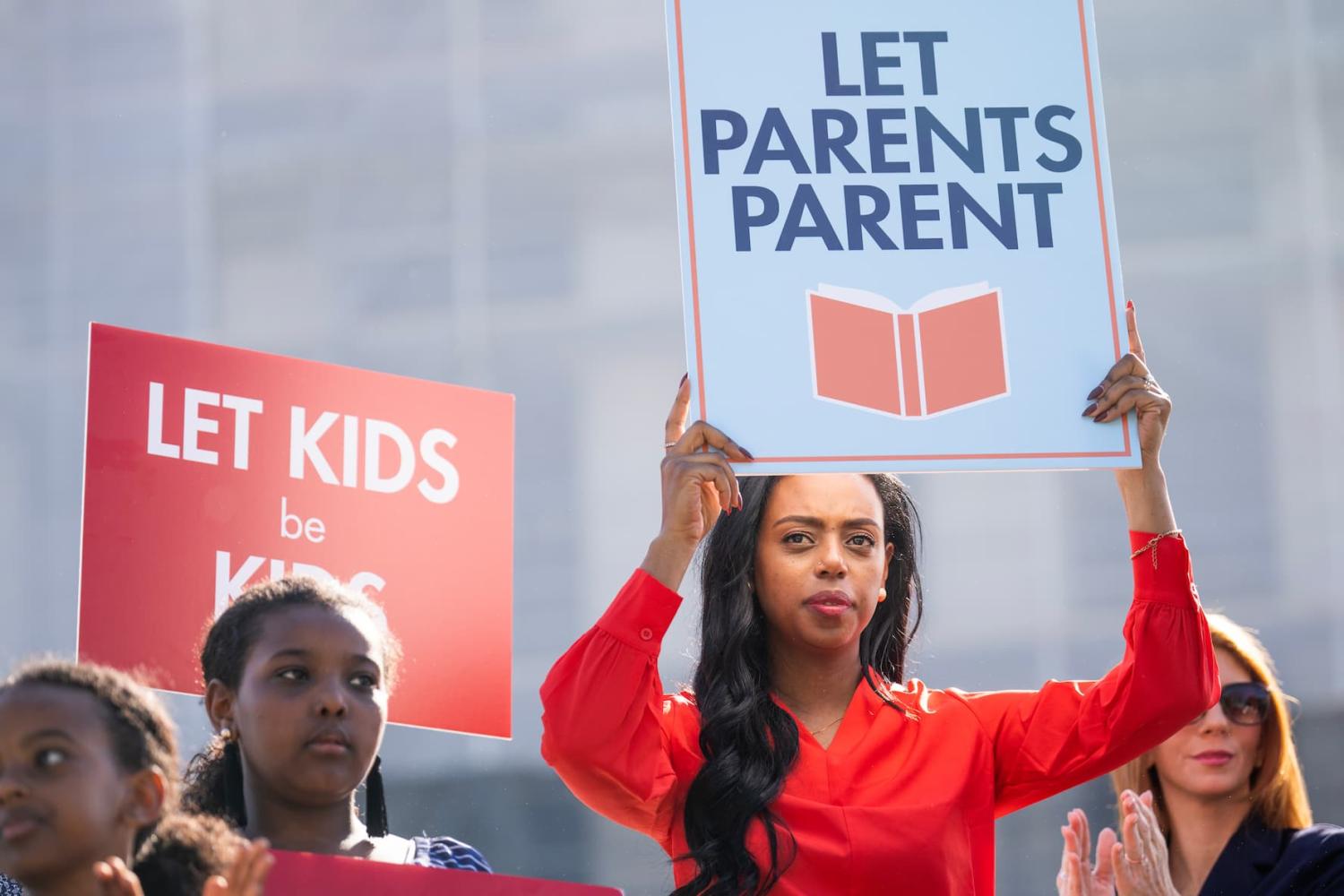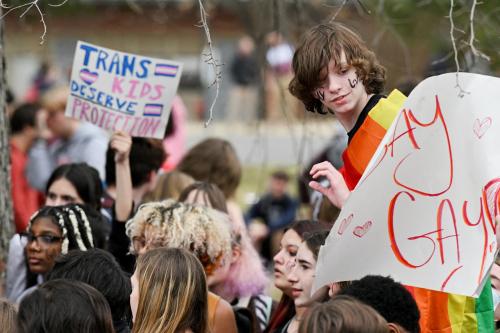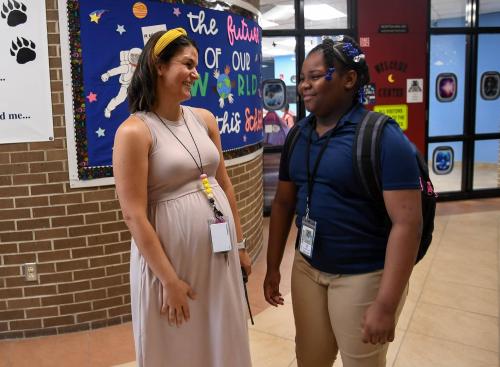In June, the U.S. Supreme Court issued its decision in Mahmoud v. Taylor, with the conservative majority ruling that having LGBTQ-inclusive literature in school curriculum without offering parents the option to opt out of such lessons, “infringed on parents’ rights to the free exercise of their religion.” The decision compels districts to provide an opt-out option for parents.
Widespread opt-outs can create severe logistical difficulties for schools and districts, because teachers need to find alternative lessons for opted-out children. Therefore, in practice, the decision may lead districts to remove LGBTQ-inclusive books—or any texts that could engender parent opt-outs—from the curriculum altogether. This is concerning to those who see public schools as places where children should learn to consider and respectfully discuss multiple perspectives on complicated issues. Both opt-outs and the removal of texts to which any parents may voice disagreement will result in children being less exposed to perspectives that may differ from their own.
Public opinion on opt-out
Historically, individual school districts had final say on opt-out decisions. The Mahmoud ruling provides a single national opt-out policy: All opt-out requests must be accommodated, provided the parent can provide a religious justification. So, to understand how the ruling might affect schools in practice (i.e., whether they should brace for the kind of logistical logjam that precipitated the Mahmoud case), we must understand what the general public thinks about opt-out. Since 2022, the topic has appeared on a number of high-quality national surveys, which give us a sense of Americans’ opinions.
In summer 2022, our research group at the University of Southern California asked a nationally representative sample from the Understanding America Study panel whether “parents should be able to opt-out their children from lessons at school that include content they disagree with.” We found that, at that time, 64% of Americans supported this generically-described instance of opt-out. Opt-out rights had majority support across most demographic groups.
In fall 2023, we asked again about this. We found that 63% of Americans supported a parent requesting that “the teacher allow the child to leave the room” during a lesson including content with which the parent disagreed.
That same fall, Pew asked similar questions of a different national sample. Instead of asking about opting out of content a parent generically “disagreed” with, Pew asked specifically about two specific subjects: race and sexual/gender identity. Interestingly, they found large differences in views toward opt-out depending on which of these topics were mentioned: 34% of Americans supported parents having the right to opt their children out of “learning about racism and racial inequality” while 54% supported the same for “learning about sexual orientation and gender identity.”
In spring 2025, just weeks before the Mahmoud decision, a Florida State University-based research group fielded a national survey where they asked about support for opting out of lessons that “conflict with [a family’s] religious beliefs.” They found 61% of Americans in support, with majority support across most subgroups (see Figure 1 for opt-out support across these surveys).
Opinions change as people hear about the downsides
Later in that same fall 2023 survey that we administered, we conducted an experiment. Respondents read a vignette in which a parent requests to opt their child out of a lesson that includes “content that [the parent] disagrees with.” We randomized whether each respondent saw—or did not see—a short paragraph before responding about their support for opt-out. This was the paragraph:
“The teacher believes that all students should participate, because learning about content they might not otherwise hear or learn about helps them. They might see a new perspective, learn to be a critical thinker, or simply learn an important new fact. And it can be hard for a teacher to accommodate every parent’s wishes for every lesson for every child.”
Half of the sample saw this paragraph and half did not. We then assessed support for opt-out by asking whether the school should grant the parent’s request.
Reading these downsides to opting-out reduced support for the practice from 57% to 41% overall, with significant reductions among respondents across the political spectrum. Those differences were still detectable, albeit smaller, when we followed up with the same group of experiment participants in summer 2024 (Figure 2).
Taken together, these various survey results suggest that Americans are supportive of parents’ ability to opt-out, but they are open to counterarguments. It was not a given that our survey experiment would reduce support for opt-out at all—if supporters of the practice deeply believed that opt-out is an essential part of religious freedom, we doubt it would have. But this experiment reduced support substantially in the immediate term. And even though most survey participants probably didn’t think about opt-out very often in the intervening nine months, those who read the additional paragraph in fall 2023 still had lower support in summer 2024 than those who hadn’t. This pattern of results suggests that our intervention may have engendered a real, lasting change in thinking, at least for some survey respondents.
School districts could share this sort of language—or language more tailored to local context and issues—with families as a way to ensure they are considering the issue from multiple angles. In fact, we imagine a carefully crafted message coming from a trusted local educator might have an even larger effect on opt-out support than the message in our survey experiment.
This malleability of support is consistent with the idea that public opinion on opt-outs, while currently favorable, may not be grounded in deep consideration of the practice. In fact, our recent UAS surveys have also shown widespread bipartisan support for students learning about multiple perspectives in their public schooling. Instead, support for opt-outs may reflect a general sense that offering parents more options is a good thing. The fact that our survey experiment produced lasting effects lends further credence to this possibility—when we provided a few sentences about how opt-out is not all upside, we may have caused survey respondents to consider implications of the practice more deeply than they had before, leading to lasting change in their opinions.
Why does this matter?
We have argued that if opt-out becomes normalized, students will not engage with views contrary to their own, missing meaningful opportunities to grapple with multiple perspectives, an essential skill for an informed democratic citizenry. If opt-out becomes common enough to create the kinds of logistical burdens that precipitated the Mahmoud case, schools will be all but forced to select curriculum materials that will not engender opt-outs. Given the current targets of the opt-out movement, such curriculum shifts would deemphasize the experiences of racial, sexual, and gender minorities, perpetuating the very silence and unfamiliarity that can give rise to bigotry. For students who belong to these minority groups themselves, this shift could mean further marginalization.
Given the recent Supreme Court decision, opt-out is the law of the land. Schools must accommodate if parents ask.
Our results suggest a way forward. Sharing just a few sentences about the downsides of opt-outs reduced its support in a lasting way, indicating many parents may not have fully considered the harms associated with the practice. Sharing a few sentences about the downsides of opt-outs could be a promising approach for schools and districts looking to combat normalization of the practice. For the sake of students’ critical thinking and an inclusive democracy, we hope they do.
The Brookings Institution is committed to quality, independence, and impact.
We are supported by a diverse array of funders. In line with our values and policies, each Brookings publication represents the sole views of its author(s).










